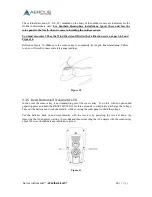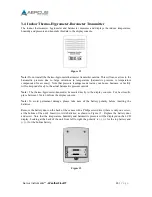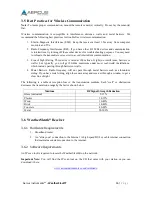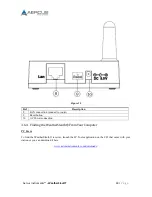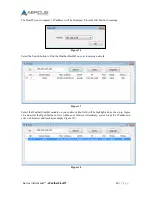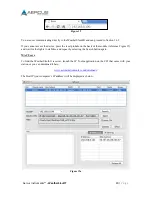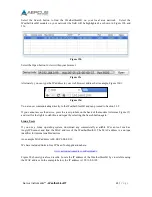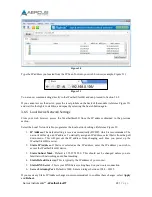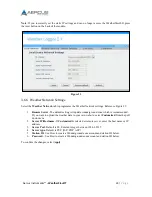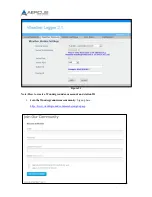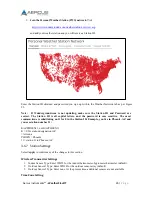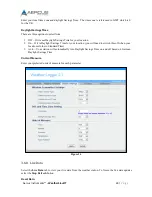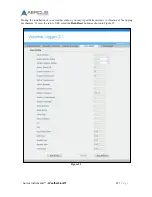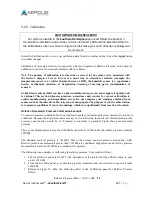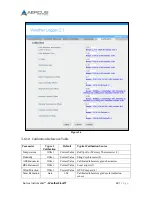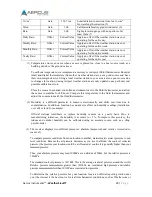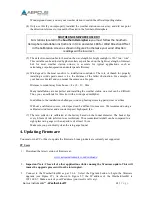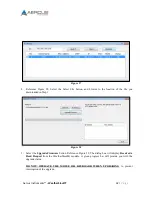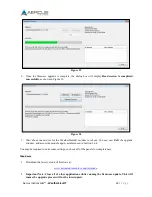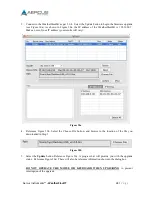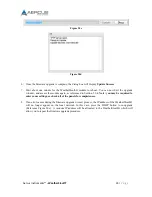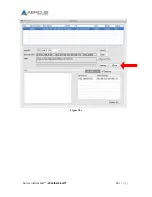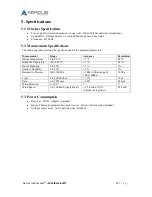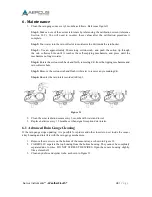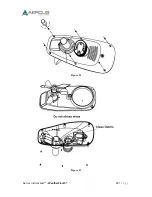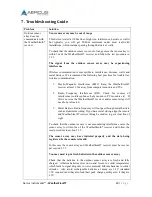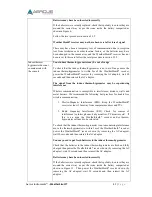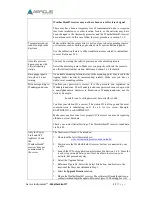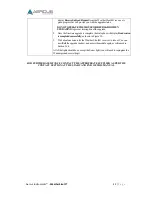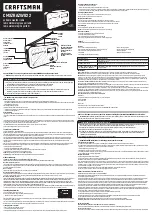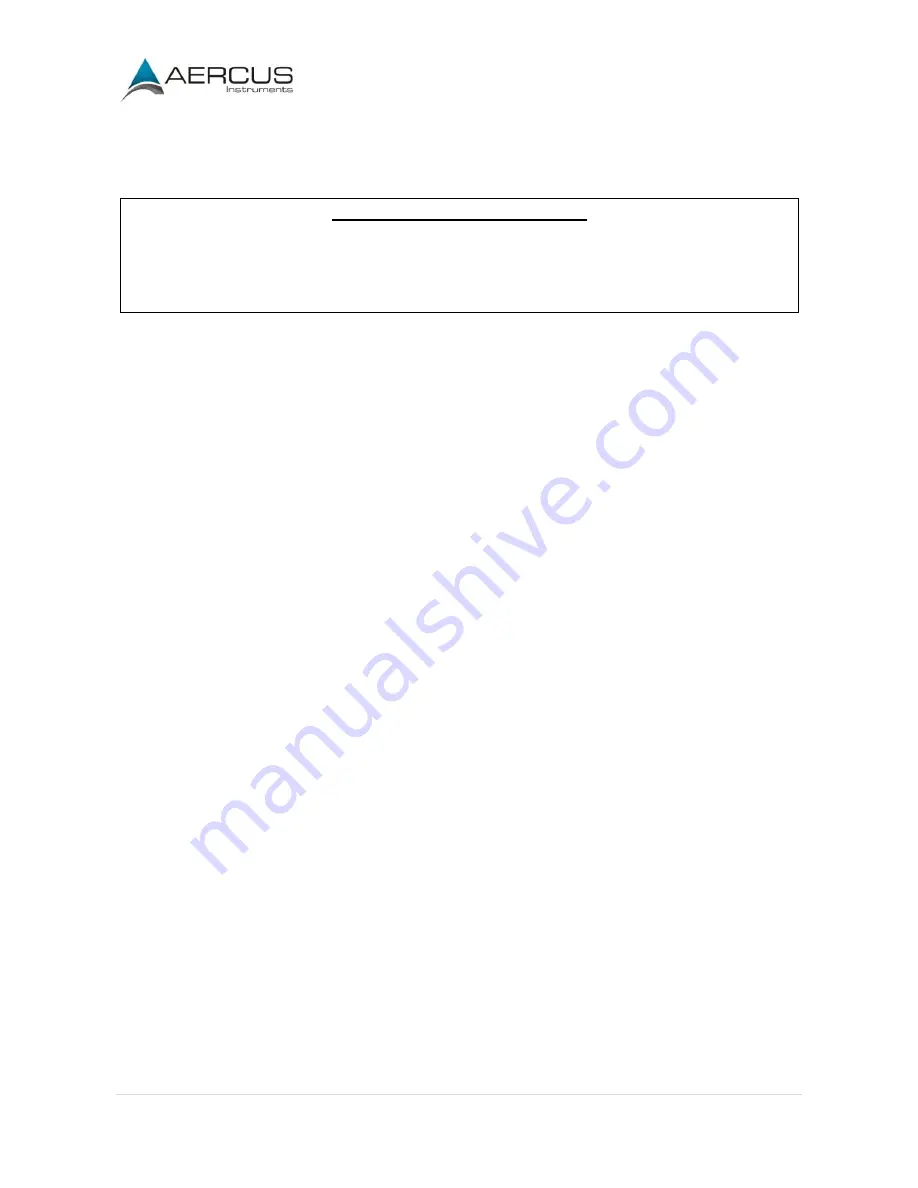
Aercus Instruments™
- WeatherSleuth®
28 |
P a g e
3.6.9 Calibration
SOUTHERN HEMISPHERE USERS!!!
For stations located in the
Southern Hemisphere
you must follow the Southern
Hemisphere installation instructions in 3.3.4 and enter 180 for Wind Direction Offset in
the Calibration screen as shown in Figure 26 otherwise your wind direction readings will
be incorrect.
Select the Calibration tab to view your calibration data from the weather station. Select the
Apply
button
to confirm changes.
Calibration of most parameters is not required, with the exception of Relative Pressure, which must be
calibrated to sea-level to account for altitude effects as below.
Note: The purpose of calibration is to fine tune or correct for any sensor error associated with
the device’s margin of error. Errors can occur due to electronic variation (example, the
temperature sensor is a resistive thermal device or RTD, the humidity sensor is a capacitance
device), mechanical variation, or degradation (wearing of moving parts, contamination of
sensors).
Calibration is only useful if you have a known calibrated source you can compare it against, and
is optional. This section discusses practices, procedures and sources for sensor calibration to
reduce manufacturing and degradation errors. Do not compare your readings obtained from
sources such as the internet, radio, television or newspapers. The purpose of your weather station
is to measure conditions of your surroundings, which vary significantly from location to location.
Relative Barometric Pressure Calibration Example
To compare pressure conditions from one location to another, meteorologists correct pressure to sea-level
conditions. Because the air pressure decreases as you rise in altitude, the sea-level corrected pressure (the
pressure your location would be at if located at sea-level) is generally higher than your measured
pressure.
Thus, your absolute pressure may read 1006hPa at an altitude of 200m, but the relative pressure would be
1030hPa.
The standard sea-level pressure is 1013hPa. This is the average sea-level pressure around the world.
Relative pressure measurements greater than 1013hPa are considered high pressure and relative pressure
measurements less than 1013hPa are considered low pressure.
The following is an example of calibrating the relative pressure. Your results will vary.
1.
The local relative pressure from TV, the newspaper or the internet for the official station in your
area is 1030 hPa.
2.
From the Live Data panel, your absolute pressure (measured, and not corrected to sea-level) reads
1006 hPa.
3.
Reference Figure 26. Enter the following offset in the Calibration panel for Relative Pressure
Offset:
Relative Pressure Offset = 1030 - 1006 =
24
Содержание WeatherSleuth
Страница 1: ...v1 2 WeatherSleuth PROFESSIONAL IP WEATHER STATION WITH DIRECT REAL TIME INTERNET PUBLISHING ...
Страница 11: ...Aercus Instruments WeatherSleuth 11 P a g e Figure 6 ...
Страница 36: ...Aercus Instruments WeatherSleuth 36 P a g e Figure 30e ...
Страница 39: ...Aercus Instruments WeatherSleuth 39 P a g e Figure 32 Figure 33 ...
Страница 54: ...Aercus Instruments WeatherSleuth 54 P a g e Figure 6 ...
Страница 80: ...Aercus Instruments WeatherSleuth 80 P a g e Figure 30e ...
Страница 83: ...Aercus Instruments WeatherSleuth 83 P a g e Figure 32 Figure 33 ...

